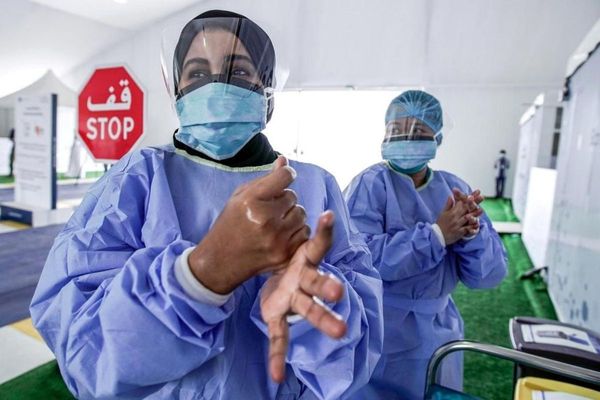The Federal Competitiveness and Statistics Centre (FCSC) has revealed new figures and statistical data, taken from its new report to be published soon, that track the UAE's progress over the past 50 years in key sectors, including population, healthcare, education, infrastructure, women, labor, food and water security, and telecommunication.
The FCSC report sheds light on the UAE's comprehensive development process and its achievements, marking the country's Golden Jubilee.
Population
The UAE's population stood at 9,282,410 in 2020, including 97,572 newborns, compared to 19,798 newborns in 1975.
Healthcare
The number of hospitals in the UAE grew by 981 percent, between the year 1975, when it had only 16 hospitals (15 public and 1 private), and the year 2020 where the number stood at 173 hospitals (56 public and 117 private). The number of caregivers including physicians, dentists and nurses grew tremendously as well, rising from 2,359 in 1985 to 26,106 in 2020.
Education
According to the report, in 1975, the UAE had 227 schools, which grew to 2,670 by 2020, at a growth rate of 1,076 percent. The number of higher education institutions in the UAE today is at 134.
The number of school students also grew by 2,090 percent, from 61,803 pupils in 1975 to 1,353,501 pupils in 2019/2020 school year. The number of students at higher education institutions stood at 295,957 (including 161,368 males and 134,589 females), meanwhile the number of fresh graduates was at 52,320 (27,620 males and 24,700 females). The number of of schoolteachers increased from 5,530 in 1975 to 108,020 in 2020, an growth of 1,853 percent.
Infrastructure
In 2020, the length of paved and unpaved roads across the country was estimated at 83,476 km. Furthermore, the number of commercial seaports stood at 12 (excluding those handling oil tankers), and the number of berths stood at 310 with a total loading capacity of 80 million tonnes. Seaports in the UAE handle around 60 percent of containers and goods that are exported to the GCC. Around 20,000 companies and institutions operate in the UAE, making it the largest sea hub in the region.
Women
Women account for 50 percent of the members in the UAE's Federal National Council, 60 percent of the members in the Emirates Youth Council and the Local Youth Councils, and 24 percent of the members in the board of directors of federal and local authorities.
Women represent 50 percent of all pupils in KG1 till Grade 12; 45.5 percent of all higher education students and 47 percent of fresh graduates.
Labour
The number of people working in the UAE grew to 6,886,484 in 2020, up from 288,000 in 1975. The total number comprises 4,792,972 people working in the private sector in 2020, up from 160,670 in 1975. Women represented 24 percent of the total workforce, while those with bachelor's degrees stood at 33.8 percent of the total number.
Despite the COVID-19 pandemic, the UAE has created around 100,000 new jobs in the retail trade sector in 2020, in addition to 148,000 jobs in the finance, IT and telecommunication sectors.
Food and water security
According to the report, the number of livestock (including cattle, sheep, goats, camels) in the UAE grew from 327,000 in 1976 to 5.1 million in 2020.
The volume of agricultural production (including crops, fruits and vegetables) also witnessed tremendous growth reaching 1.2 million tonnes in 2020, up from 103,000 tonnes in 1977. The value of the production stood at AED4.1 billion in 2020, up by 2,555 percent from 1977 when it was at AED154 million.
Telecommunication
The number of subscriptions to the landline stood at around 2,380,000 in 2020, up from 26,200 lines in 1975. Mobile phone subscriptions grew from 13,711 in 1987 to 18,374,332 in 2020, meanwhile internet subscriptions grew from 1.2 million in 2008 to over 3.2 million in 2020.
News Source: Emirates News Agency









